- Skip to primary navigation
- Skip to main content
- Skip to primary sidebar
The Military Wallet

Space-A Travel Guide: Everything You Need to Know to Take a Flight on a Military Hop
Advertiser Disclosure: The Military Wallet and Three Creeks Media, LLC, its parent and affiliate companies, may receive compensation through advertising placements on The Military Wallet. For any rankings or lists on this site, The Military Wallet may receive compensation from the companies being ranked; however, this compensation does not affect how, where, and in what order products and companies appear in the rankings and lists. If a ranking or list has a company noted to be a “partner,” the indicated company is a corporate affiliate of The Military Wallet. No tables, rankings, or lists are fully comprehensive and do not include all companies or available products.
The Military Wallet and Three Creeks Media have partnered with CardRatings for our coverage of credit card products. The Military Wallet and CardRatings may receive a commission from card issuers.
Opinions, reviews, analyses & recommendations are the author’s alone and have not been reviewed, endorsed, or approved by any of these entities. For more information, please see our Advertising Policy .
American Express is an advertiser on The Military Wallet. Terms Apply to American Express benefits and offers.
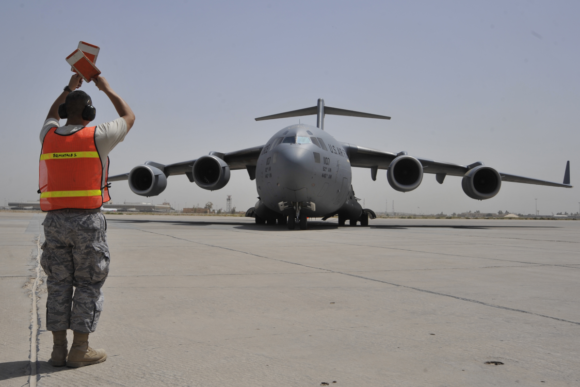
Space-Available (Space-A) travel offers military servicemembers, veterans, and their families a unique and cost-effective way to fly on military aircraft. Managed by the Air Mobility Command (AMC), this program provides an invaluable opportunity to travel for free or at minimal cost, albeit with certain limitations and requirements.
Recent Developments and Current Policies
As of April 22, 2022, the Office of the Under Secretary of Defense lifted all restrictions on Space-A travel that had been in place since March 2020 to curb the spread of COVID-19. While restrictions have been lifted, travelers should be aware that mask mandates and medical screening protocols may still apply depending on the destination and prevailing health guidelines. Staying informed about current health policies is crucial for ensuring a smooth travel experience.
The Evolution of Space-A Travel
Space-A travel has come a long way from its earlier days when servicemembers had to physically report to military terminals or fax paperwork to sign up. Today, the process is more streamlined and convenient.
Servicemembers and their families can sign up via email and check their travel status by contacting the passenger terminal. Flight schedules are commonly posted on the official Facebook pages of each AMC Passenger Terminal, making it easier to stay informed and plan accordingly.
There is a large, public (though not official) Facebook group dedicated to providing information on Military Space Available travel. You can find the group here .
This modernization has significantly improved accessibility and efficiency for all eligible travelers.
Jump to our full AMC Passenger Terminal Directory below by clicking here .
Navigating the Roll Call and Priority System
Travelers who wish to fly Space-A must check in at the passenger terminal and participate in a roll call for their chosen flight. Space-A passengers are selected based on a priority system that categorizes travelers by urgency and eligibility, followed by the date and time of signup.
Emergency leave and environmental morale leave travelers hold the highest priority, but understanding the nuances of each category can significantly improve one’s chances of securing a seat. Proper planning and timely sign-up are critical to navigating this system effectively.
Space-A Categories
Space-A travel is organized into six categories, prioritizing travelers based on urgency and eligibility:
- This category includes unfunded travel for active-duty members on emergency leave. Due to the urgent nature of the travel, it is the highest priority.
- Accompanied EML for active-duty members and their dependents falls into this category. It is designed to support the morale and well-being of servicemembers and their families.
- This category encompasses ordinary leave, relatives, house hunting, Medal of Honor recipients, and foreign military personnel. It offers significant flexibility for various personal and family needs.
- This category is for unaccompanied environmental and morale leave, providing travel opportunities for servicemembers without their dependents.
- This category includes non-house hunting permissive TDY, students, dependents, and post-deployment/mobilization respite absence. It covers a broad range of permissive travel scenarios.
- This category includes retirees, dependents, reservists, veterans with a permanent service-connected disability rated as total, and surviving spouses of service members who died on active duty. It provides access to Space-A travel for a wide range of eligible individuals.
Required Documentation
Travelers must complete a Space-A travel request (Form 140) and provide a valid military or veteran ID. A passport or visa may be necessary for international travel. Ensuring that all documentation is current and accurately reflects eligibility status is essential.
Travelers should carry copies of orders, leave paperwork, and any other relevant documents that may be required by the passenger terminal. Proper documentation is crucial for a hassle-free travel experience. For more details, visit our Veteran Travel Tips.
How Space-A Travel Works
1. identify your destination and possible routes:.
The first step is to learn which bases have regular flights to where you want to travel. This list of worldwide destinations where Space-A travel may be available includes profiles of some of the terminals and information about typical flight destinations. You’ll want to begin following some of their Space-A flight schedules, which we’ll discuss in the next step.
You may find several possible routes to your desired destination. For example, if you are on the East Coast and want to fly to one of the common destinations, including Spain or Germany, you will likely be able to travel from several nearby bases. Travelers from other parts of the U.S. may need to take two or more hops to get there.
The Space-A Travelers Facebook group can help you put together a flight plan to your destination. You can ask questions and find information about flying to and from specific locations.
You may have to combine Space-A travel with other transportation. For example, you may need to fly or drive to a base with regular Space-A flights to your desired destination. Or you may need to take a train or flight from an overseas base to your final destination.
2. Follow the Space-A Flight Schedules:
The Air Mobility Command website maintains a list of all the military passenger terminals , as well as their contact info and links to their websites and Facebook pages.
You’ll find a 72-hour flight schedule for most terminals on their Facebook pages or the AMC website. The schedules include trip destinations, the number of Space-A seats and the “roll call” time. The roll call time is when terminal staff announces who has been selected for the flight.
You may also find information about recently departed flights, including how the number of Space-A seats and how many passengers competed for those seats.
Click here for more details on how to read the Space-A schedules on Facebook .
When you monitor the flights that depart from your target passenger over several weeks or months, you’ll notice patterns in the location and frequency of their missions.
3. Sign Up to Travel from All Possible Starting Locations:
Determine all the terminals you could depart from to reach your desired destination. You’ll increase your chances of success by signing up to fly from all of them. Signing up is free and takes only a few minutes.
The AMC website details the sign-up options, including the required information. You can sign up through their website, by email or in person at the terminal. You can also use the Take-A-Hop app (which costs $6.99). If you’re signing up for several terminals, email and the Take-A-Hop app are the easiest ways to do so.
The sooner you can sign up, the better, as priority within each category is based on the sign-up date and time. So sign up as early as possible. At most terminals, your sign-up is valid for up to 60 days.
Keep in mind that your category may affect how early you can sign up for Space-A travel. For example, active-duty service members (Cat 3) must be on leave before they can sign up. Those in Cat 3, however, have precedence over those in Cats 4 through 6, regardless of when they signed up.
4. Mark Yourself Present Within 24 Hours of Roll Call:
You must mark yourself present at the terminal before roll call to let the staff know that you are competing for the flight. You can do so anytime within 24 hours of the scheduled roll call. Note: roll call times can change unexpectedly, so continually monitor the terminal’s 72-hour flight schedule to ensure you get there in time or, better yet, call the terminal to confirm.
Bring your military ID and any necessary documents, such as your passport, your leave form or your EML orders. If you are an unaccompanied dependent, you’ll need a memo from your sponsor’s command. Also bring a copy of your sign-up email as a backup to prove your sign-up date and time.
5. Listen for Your Name During Roll Call:
At roll call, terminal staff will announce how many Space-A seats are available for the flight and then the names of the selected passengers, beginning with those in the highest-priority category.
If they call your name, go to the desk and confirm that you and any dependents traveling with you are present. You’ll need to show your military ID and any required paperwork, as well as ID cards for passengers older than 10 years old. For younger passengers, bring their passports or MilConnect printouts that show the Department of Defense ID numbers.
If they don’t call your name, don’t leave the terminal just yet. Sometimes last-minute Space-A seats become available, so stay at the terminal until boarding time.
6. Check Your Luggage and Obtain Your Boarding Pass:
Once you and all members of your traveling party, along with all your luggage, must be present when the baggage check begins. This may be right after roll call, or it may be several hours later. You will need to stay in the terminal, as boarding times, like roll call times, can change without notice.
The AMC website’s FAQ page includes detailed information on baggage allowances. Because smaller aircraft may have different weight limits for luggage, it’s best to check ahead of time.
You will generally be allowed to check two pieces of luggage weighing up to 70 lbs each. Similar to many commercial flights, you can also bring one piece of carry-on luggage that fits under your seat or in the overhead compartment. You can usually check car seats and strollers, and they won’t count toward your baggage allowance.
AMC terminals follow the Transportation Security Administration’s baggage screening guidelines , so check their website ahead of time to see what you can bring in your carry-on bag, and what you must put in checked luggage.
Check if meals are available on the flight, as you’ll pay for these when you check your luggage. Some locations offer simple box lunches for a nominal cost.
7. Board the Aircraft and Pick Your Seat:
If you are flying Space-A on a Patriot Express flight , your boarding pass will list your assigned seat.
When terminal staff announces boarding, you’ll go through security and wait in a secure area. With most flights, a bus will take you to the aircraft, and you’ll board from the tarmac.
On most Space-A flights, you’ll choose your seat when you board. On Patriot Express flights, your boarding pass will list your assigned seat.
Practical Tips and Advice
- Monitor Flight Schedules: Regularly check the 72-hour flight schedules posted on terminal Facebook pages and the AMC website.
- Use the Take-A-Hop App: Sign up for multiple terminals efficiently with the Take-A-Hop app.
- Pack Strategically: Travel light to increase flexibility. Under 30 pounds of luggage is ideal.
- Plan for Contingencies: Have backup plans in case of delays or cancellations.
Information on Patriot Express Flights
Patriot Express flights offer amenities, including meals and in-flight movies. Other Space-A flights may have minimal accommodations, so be prepared with your own food, water, and warm clothing.
Pros and Cons of Flying Space-A
There are advantages and disadvantages to Space-A travel.
The Pros: What Are the Advantages of Flying Space-A?
Space-A flights can save you hundreds or thousands of dollars over commercial airlines, which is a clear advantage. The only costs you might incur are a low per-passenger fee on Patriot Express flights, and you may be able to purchase low-cost meals at some terminals that offer meals for purchase.
When you land, you’ll be able to access base resources, including overnight base lodging and the commissary. You may even be able to purchase discount tickets to local events and attractions through the base’s Information, Tickets and Travel office (ITT).
Being able to stretch out on some aircraft can be another advantage over flying economy in a commercial plane.
If you’re traveling with small children, you may also find that other passengers are more supportive than with a commercial airline.
And, of course, there may be a greater sense of adventure with Space-A travel.
- Cost Savings: Space-A flights can save you hundreds or thousands of dollars.
- Access to Base Amenities: Enjoy access to base lodging, commissaries, and discount tickets through the Information, Tickets and Travel (ITT) office.
- More Space: Some military aircraft offer more space to spread out compared to commercial flights.
The Cons: What Are the Disadvantages of Space-A?
Space-A travel is less predictable than flying commercially. Passenger terminals post flight schedules only 72 hours in advance, and you won’t know if you got a seat until the last minute.
Peak travel times, including summer, winter holidays, and even spring break, are even more competitive. You may need to be more flexible about when you travel and even where you’ll go.
When traveling Space-A, you may incur extra expenses such as transportation to the departure base, and there may be wait times for return flights, leading to additional costs for accommodation and meals.
Finally, Space-A travel, unless you’re on a Patriot Express flight, is bare bones. You may find it cold, loud, and uncomfortable.
- Unpredictability: Flight schedules are posted only 72 hours in advance, and seats are not guaranteed.
- Potential Additional Costs: Lodging, meals, and transportation costs can add up.
- Comfort: Military aircraft can be cold and uncomfortable, lacking commercial amenities.
Guidance on When to Use Space-A Travel
Space-A travel is best for those with flexibility and patience. It’s not ideal for time-sensitive events or travel during peak seasons. Plan your travel during off-peak times to increase your chances of securing a seat.
Operational Security (OPSEC)
Maintain operational security by avoiding real-time updates about travel details on social media. This ensures the safety and security of military operations.
Seasoned Traveler Insights
Flying Space-A requires planning, patience, and flexibility. Learn as much as you can about the process, and also research desired destinations and passenger terminals so that you can put together a successful flight plan.
When you are ready to leave, make sure you always have a backup plan and ensure you have enough money to pay for commercial transportation if Space-A doesn’t work out. Also, be prepared for a multi-legged journey–several shorter hops that bring you closer to your destination rather than one long direct flight.
Final Thoughts on Space-A Travel
Space-A travel offers a valuable and economical travel option for eligible military servicemembers, veterans, and their families. While it requires flexibility, preparation, and a willingness to adapt to changing circumstances, the opportunity to fly at little to no cost can make it worthwhile. By understanding the priority categories, planning for contingencies, and utilizing available resources, travelers can maximize the benefits of Space-A travel and enjoy unique travel experiences.
In essence, Space-A travel is about balancing cost savings with the realities of military transport. It may not always be convenient or comfortable, but for those willing to navigate its complexities, it offers unparalleled opportunities for economical travel. For more detailed information and updates, always refer to the Air Mobility Command (AMC) website and local military passenger terminal resources. By staying informed and prepared, you can take full advantage of this remarkable benefit and embark on memorable journeys.
For further tips on military travel and benefits, you might find our articles on Veterans’ Travel Discounts, Military Travel Tips, and Retirement Benefits for Veterans helpful. Additionally, you can explore comprehensive guides and updates on military travel on the Defense Travel Management Office website.
AMC Passenger Terminal Directory
Amc conus terminals.
- Commercial: (609) 253-8825
- DSN: (312) 568-8825
- Email: [email protected]
- Website: Baltimore-Washington International Passenger Terminal
- Commercial: (302) 677-4088 / 2854
- DSN: (312) 445-4088 / 2854
- Website: Dover AFB Passenger Terminal
- Commercial: (509) 247-3406
- DSN: (312) 657-3406
- Website: Fairchild AFB Air Transportation Function
- Commercial: (301) 981-3604
- DSN: (312) 858-3604
- Website: Joint Base Andrews Passenger Terminal
- Commercial: (843) 963-3048 / 3083
- DSN: (312) 673-3048 / 3083
- Website: Joint Base Charleston Passenger Terminal
- Commercial: (253) 982-7259 / 7268
- DSN: (312) 382-7259 / 7268
- Website: Joint Base Lewis-McChord Passenger Terminal
- Commercial: (609) 754-5023 / 9950
- DSN: (312) 650-5023 / 9950
- Website: Joint Base McGuire Dix Lakehurst Passenger Terminal
- Commercial: (501) 987-3118
- DSN: (312) 731-3118
- Website: Little Rock AFB Air Transportation Function
- Commercial: (813) 828-2440
- DSN: (312) 968-2440
- Website: MacDill AFB Air Transportation Function
- Commercial: (316) 759-4810 / 5404
- DSN: (312) 743-4810 / 5404
- Website: McConnell AFB Air Transportation Function
- Commercial: (904) 542-8159/3956
- DSN: (312) 942-8159/3956
- Website: Naval Air Station Jacksonville Passenger Terminal
- Commercial: (757) 341-9912 / 9913
- DSN: (312) 341-9912 / 9913
- Website: Naval Station Norfolk Passenger Terminal
- Commercial: (910) 394-1003
- DSN: (312) 424-1003
- Website: Pope Army Airfield Passenger Terminal
- Commercial: (618) 256-3017 / 1854
- DSN: (312) 576-3017 / 1854
- Website: Scott AFB Air Transportation Function
- Commercial: (253) 982-3504 / 0555
- DSN: (312) 382-3504 / 0555
- Website: Seattle-Tacoma International Airport Passenger Terminal
- Commercial: (707) 424-5774 / 1854
- DSN: (312) 837-5774 / 1854
- Website: Travis AFB Passenger Terminal
EUCOM Terminals
- Commercial: 011-039-0434-03-7680
- DSN: (312) 632-7680
- Website: Aviano AB Passenger Terminal
- Commercial: 90-322-316-6425/6001
- DSN: (314) 676-6425/6001
- Website: Incirlik AB Passenger Terminal
- Commercial: 011-351-295-57-3961/3227
- DSN: (314) 535-3227-3961/3227
- Website: Lajes Field AB Passenger Terminal
- Commercial: 34-95-682-2411
- DSN: (314) 727-2411/2171
- Website: Naval Air Station Rota Passenger Terminal
- Commercial: 39-095-86-5576/6725
- DSN: (314) 624-5576/6725
- Website: NAS Sigonella Air Terminal
- Commercial: 011-39-81-568-5283/5369
- DSN: (314) 626-5283/5396
- Website: NSA Naples Passenger Terminal
- Commercial: 011-30-282102-1275/1383
- DSN: (314) 266-1275/1383
- Website: NSA Souda Bay Passenger Terminal
- Commercial: 01638-54-2248
- DSN: (314) 238-2248
- Website: RAF Mildenhall Passenger Terminal
- Commercial: 06371-46-4441
- DSN: (314) 479-4441
- Website: Ramstein AB Passenger Terminal
- Commercial: 011-49-6565-61-8866
- DSN: (314) 452-8866
- Website: Spangdahlem AB Passenger Terminal
INDOPACOM Terminals
- Commercial: (671) 366-5165/2095
- DSN: (315) 366-5165/2095
- Website: Andersen AFB Passenger Terminal
- Commercial: 011-63-45-499-8157/8396
- Commercial: (246)370-2795
- DSN: (315) 370-2795/2745
- Website: Diego Garcia Passenger Terminal
- Commercial: (907) 377-1250/1854
- DSN: (317) 377-1250/1854
- Website: Eielson Passenger Terminal
- Commercial: (907) 552-8588/4616
- DSN: (317) 552-8588/4616
- Website: Joint Base Elmendorf-Richardson Passenger Terminal
- Commercial: 011-81-611-734-6487/2159
- DSN: (315) 634-6487/2159
- Website: Kadena AB Passenger Terminal
- Commercial: 011-82-063-470-4666
- DSN: (315) 782-4666
- Website: Kunsan AB Passenger Terminal
- Commercial: (808) 664-7264/7265
- DSN: (315) 447-7264/7265
- Website: Joint Base Pearl Harbor-Hickam Passenger Terminal
- Commercial: 011-81-827-79-5509
- DSN: (315) 253-5509
- Website: MCAS Iwakuni Passenger Terminal
- Commercial: 011-81-176-77-2370/2371
- DSN: (315) 226-2370/2371
- Website: Misawa AB Passenger Terminal
- Commercial: +81 467-63-3118
- DSN: (315) 264-3118
- Website: NAF Atsugi Passenger Terminal
- Commercial: 011-82-505-784-6883/1854
- DSN: (315) 784-6883/1854
- Website: Osan AB Passenger Terminal
- Commercial: 65-6280-0624
- DSN: (315) 227-5228
- Website: Paya Lebar Passenger Terminal
- Commercial: 011-612-4587-1652
- Commercial: 011-81-3117-55-7111/5661/5662
- DSN: (315) 225-5661/5662
- Website: Yokota AB Passenger Terminal
CENTCOM Terminals
- Commercial: 011-974-4458-9555
- DSN: (318) 455-9555
- Website: Al Udeid AB Passenger Terminal
- Commercial: 011-93-1-481-5000
- DSN: (318) 431-5000
- Website: Bagram Airfield Passenger Terminal
SOUTHCOM Terminals
- Commercial: 011-504-2713-5123/4407
- DSN: (312) 449-5123/4407
- Website: Soto Cano AB Passenger Terminal
- Commercial: (787) 253-7491/5162
- DSN: (312) 860-7491/5162
- Website: Muniz ANGB Passenger Terminal
NON-AMC CONUS Terminals
- Commercial: (904) 542-8159 / 3956
- DSN: (312) 942-8159 / 3956
- Website: NAS Jacksonville Passenger Terminal
ANG & Reserve Terminals
- Commercial: (205) 714-2345
- DSN: (312) 778-2345
- Website: Birmingham ANGB Passenger Terminal
- Commercial: (586) 239-5576
- DSN: (312) 273-5576
- Website: Selfridge ANGB Passenger Terminal
- Commercial: (413) 557-3446
- DSN: (312) 589-3446
- Website: Westover ARB Passenger Terminal
About Post Author
Stephanie Montague
Stephanie Montague is the founder of Poppin’ Smoke , a website designed to encourage members of the military community to use their military benefits for travel. Stephanie and her husband have been traveling the world since he retired from the Army in 2015. Through Poppin’ Smoke, Stephanie shares everything they learn about Space-A travel and using military benefits while abroad.
See author's posts
Posted In: Military & Veterans Benefits
More From Us

Can you use a VA loan to purchase an investment property?

Can You Use a VA Loan Home as an Airbnb?

A Guide on VA Loan Debt-to-Income (DTI) Ratio
Reader interactions, leave a comment: cancel reply.
About the comments on this site:
These responses are not provided or commissioned by the bank advertiser. Responses have not been reviewed, approved or otherwise endorsed by the bank advertiser. It is not the bank advertiser’s responsibility to ensure all posts and/or questions are answered.
ray maring says
December 29, 2023 at 9:17 am
Thank you for hosting this information. I am a guardsman, retired and are interested in traveling now.
Load More Comments
As Featured In:
The Military Wallet is a property of Three Creeks Media. Neither The Military Wallet nor Three Creeks Media are associated with or endorsed by the U.S. Departments of Defense or Veterans Affairs. The content on The Military Wallet is produced by Three Creeks Media, its partners, affiliates and contractors, any opinions or statements on The Military Wallet should not be attributed to the Dept. of Veterans Affairs, the Dept. of Defense or any governmental entity. If you have questions about Veteran programs offered through or by the Dept. of Veterans Affairs, please visit their website at va.gov. The content offered on The Military Wallet is for general informational purposes only and may not be relevant to any consumer’s specific situation, this content should not be construed as legal or financial advice. If you have questions of a specific nature consider consulting a financial professional, accountant or attorney to discuss. References to third-party products, rates and offers may change without notice.
Editorial Disclosure: Editorial content on The Military Wallet may include opinions. Any opinions are those of the author alone, and not those of an advertiser to the site nor of The Military Wallet.
Information from your device can be used to personalize your ad experience.
Space A Travel: Everything You Need To Know
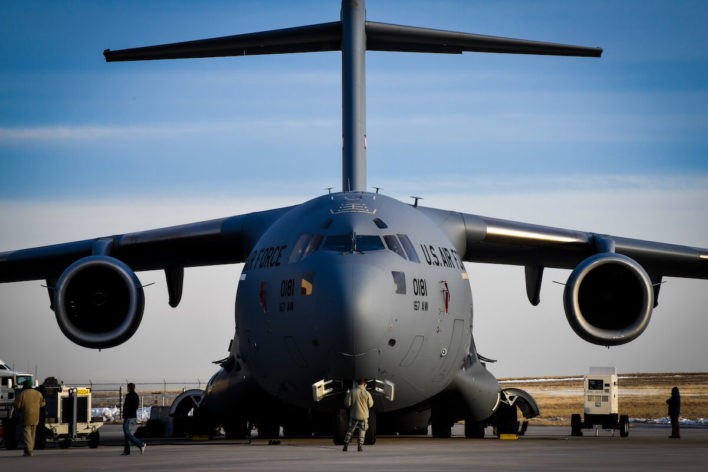
Julie Provost
What is Space-A Travel?
Space-A is being able to travel on DOD aircraft for free or at a limited cost. The flights you take are on a space-available basis, and the number of passengers they take will depend on the flight. Space-A can get you to many different places worldwide, but some locations are more challenging to fly to than others.
When you fly Space-A, you have to do some planning and research. You must know which Space-A category you fall into and what that will mean for flights. You will need to make sure you are eligible and have all the right paperwork. You can travel with children, but you do need to be prepared for the whole trip, and that might be more difficult than flying commercially.
What Are the Different Categories for Space-A Travel?
Those who are eligible for Space-A typically fit into one of six different categories. These categories help determine how likely it is that you can fly.
Category I : Emergency Leave Unfunded Travel- For emergency situations only.
Category II: EML (Environmental Morale Leave) for Active Duty and dependents.
Category III: Active Duty Ordinary Leave- This category also includes those on Terminal Leave as well as their accompanied dependents, those on House Hunting Permissive TDY, Medal of Honor Holders, and dependents of deployed service members as long as they are deployed for 365 consecutive days or more. It is important to note that these dependents will be selected behind active duty members no matter when they sign up.
Category IV: Unaccompanied Dependents on EML or dependents whose sponsor is deployed between and including 30-364 days as well as DODDS teachers on EML during the summer.
Category V: Unaccompanied command-sponsored and non-command-sponsored dependents of active duty, permissive TDY (non-house hunting), and students.
Category VI: 100% disabled veterans. Retirees as well as their accompanied Dependents, reserve, ROTC, NUPOC, and CEC. The DoD adds, “Surviving Spouses of service members who died while on active duty, inactive duty training, or annual training status. as well as retired military members, and their accompanying dependents.”
Can Retirees Fly Space-A?
Retired military members who are issued DD Form 2 and eligible to receive retired or retainer pay may use Space-A travel according to the Air Mobility Command Space-A official site.
RELATED : Disabled Veterans Can Now Fly Space-A
Are You Able to Travel Without Your Service Member?
Only eligible dependents whose service member is stationed overseas can travel unaccompanied and would do so as CAT-V, with some CONUS restrictions. Those whose service member is deployed for 30 days or more may travel unaccompanied anywhere that Space-A is allowed at a CAT-III, after active duty, or CAT-IV, based on how long they are deployed, as mentioned above. If your spouse is not deployed and stationed in CONUS, you can not use Space-A unless you are with your service member.
What About National Guard or Reserve Members?
At press time, Space-A travel is authorized for National Guard/Reserve components/members of the Ready Reserve and members of the Standby Reserve who are on the Active Status List.
What Do You Have to Do to Get On A Flight?
The first step is get authorized to travel on Space-A. This means starting leave if you are on active duty or getting a travel letter if you are an unaccompanied dependent. If you are a retiree, you should be authorized when you are ready to start the process.
- Sign up and register at the locations you plan to travel to and from. You can do this at some terminals through an online form, in person, by email, or by fax. This signing up doesn’t mean you are on a flight or have an exact flight time. What you will be doing is getting assigned a date and time. This will put you in front of anyone in your category who has a later date and/or time than you do.
- Sign up as soon as possible for as many places as you think you might go. If you are unsure where you will be flying from, sign-up for all potential places. You don’t want to sign-up too far in advance so that your sign-up expires before the date you want to fly. For active duty, you should sign-up as soon as your leave starts, and that sign-up should last until your leave is over. For non-active duty, sign-ups are valid for 60 days.
- Each sign-up location is independent. Call to verify that you are signed up and carry a printed copy of your emails verifying you have done so. That way, you can show that you should be on any list you need to use to travel.
Showing Up for a Flight
- Show up before any potential flight you want to take. Flights will get posted, and you can make your plan from there. You need to mark yourself “Present” for the flight you want to go on. This tells the terminal that you are there and will be ready to fly when the time comes.
- When exactly you are marked “Present” doesn’t matter as far as where you are in line; the date and time of when you signed up does, but you would need to be marked present within 24 hours of flight time.
- It is a good idea to get to the terminal, ready to fly with all of your bags and paperwork, about an hour before what is called “Show Time.” You would then mark yourself “Present” by checking in at the desk and wait until “Show Time.” At this point, you do not want to leave the area, even to grab a bite to eat. Times can change, and you want to be ready if that happens.
Show Time and Roll Call
- “Show Time” is when “Roll Call” can begin, and it is about 2-3 hours before it would be time to fly. You need to be aware of when “Show Time” is supposed to start, as well as what time you would fly if you make it on the flight. Always give yourself extra time.
- “Roll Call” is going to be when the date and time you “signed up” for that location and the category you are in come into play. With “Roll Call,” they start with CAT-I and go through all the way until CAT-VI or until they fill all the seats. For example, someone in CAT-IV, who signed up on June 1st at 10:30 am will be ahead of someone who signed up for CAT-IV, on June 1st, at 11:30 am. All of CAT-IV would be ahead of all of CAT-5. They might just have 10 seats, or they might have 50 seats, it depends on the flight, aircraft, and how much space they actually have on the flight.
- You will need to be right there during “Roll Call.” If you are somewhere else, and they call your name, and you don’t check-in, you will not make it on the flight. You will need to be travel-ready when this happens.
- Being “Manifested” means you are selected for a flight, and you will be going on this flight unless the flight itself is canceled or you get bumped for cargo. This is where you want to be.
- You can also be “Manifested Through,” which means you won’t have to compete for a seat on your second flight. However, you need to make sure you are “Manifested Through” to your end location. This, however, does not mean you have your round trip covered. You will have to compete for seats on your return trip.
How Much Does Space-A Travel Cost?
Many Space-A flights are free; however, if you take a Patriot Express flight, you may be charged a head tax and inspection fees. Bring cash for this flight, you may not be permitted to pay using a credit card.
You may also need to have extra money for possible stays in hotels, extra food, or even money for transportation. Because some flights get canceled, or it can be hard to get on right away, you might have to wait near the terminal for a few nights.
How Many Bags Can You Bring?
For Space-A, the nature of the mission determines how much baggage can be loaded. On some flights, you may be allowed to bring two pieces of luggage each, not to exceed 70 lbs. For others, there may be a requirement for the bags to be under 30 lbs.
Where Can You Go For Extra Help?
- The Air Mobility Command website – This is where you can read information about how Space-A works, sign up for flights, and more.
- SpaceA.net – An informational site about the ins and outs of Space-A travel.
Other Tips For Flying Space-A?
The main thing you need to remember is that Space-A is going to require some planning. You will need to spend some time researching where you will go, how many flights they have, and how easy it might be for you to get on a flight. Certain times of the year are busier than others, and you must bring your patience.
Flights can get delayed for days. You might go through the entire process and end up on a flight, only to have to get off and start all over again because there is something going on with the plane. You need to plan for if your first idea doesn’t work out.
There are a lot of benefits to flying Space-A. You can see the world and can do so without having to spend a lot of money, but you have to understand that you will have to work for it. Some flights will be easier than others, and you just never really know what you will find when you attempt to fly Space-A.
If you need to reach your destination by a certain date, Space-A might not be the best way to get there. Unlike a commercial airline, you are not guaranteed a time and a place to fly. Being flexible and understanding is a must. If you can go into Space-A with that mindset, you can enjoy everything Space-A has to offer.
- Airlines with Military Discounts
- Disabled Veterans Can Now Fly Space-A
- Delta Airlines Military Discount
- Summer Travel Discounts for Military Families
- Best Vacations for Military Families in the US
- Hotels with Military Discounts
Featured Posts
- Find Your Next Base: List of Military Installations by State
- Military Benefits Guide
- TRICARE Basics
- GI Bill Benefits Guide
- Guide to Private Life Insurance for the Military
- VA Home Loan Benefits Guide
- Naval Base San Diego Guide
- Los Angeles Air Force Base Guide
- Marine Corps Base Quantico Guide
Recent Posts
- Pentagon Announces Military Quality of Life Reforms
- Federal Budget Impasse Threatens Military Programs, Benefits
- VA Announces Grants to Help End Veteran Homelessness
Military Discounts for Home Improvement
- Career Resources for Blind Veterans, Visually Impaired Veterans
- VA Loan Refinance Options You Should Know
- PCSing With Pets Overseas: DoD Policy Changes
- 5.5% Pay Raise for Junior Troops: Senate Defense Spending Bill Announced
- Veteran Benefits in Jeopardy? VA Faces $3 Billion Budget Problem
Advance Auto Parts Military Discount
Most Popular Articles
- Costco Military Discount
- COLA to Increase 5.9% for Retirees, Disabled Veterans in 2022
- Military Discount Flights for Veterans & Military
- Disneyland Military Discount
- Military Discounts on Golfing & Golf Gear
- Waves of Honor: Discounted Admission for Military & Veterans
- Disney World Military Discount
- Free TSA PreCheck for Military
- Sam’s Club Military Offer
- Home Depot Military Discount

Read More 786 WORDS

Read More 188 WORDS
5 Military Automobile Discounts for 2024

Read More 920 WORDS
Find VA Approved Colleges that Accept Military & Veteran Benefits
Get Started
Search nearly 3000 VA-approved school profiles to find your perfect fit

How to Space-A travel and why you should
R eady to jet-set around the world without emptying your wallet? Let’s dive into the ins and outs of Space-A travel so you can start planning your next adventure.
Here’s everything you need to know about Space-A travel:
What is Space-A Travel?
Space-Available (Space-A) travel is a perk that allows eligible passengers to fill unused seats on military aircraft. Think of it as the military’s version of standby flights. It’s a fantastic opportunity to explore new places, but it has its own rules and quirks.
Who can use Space-A travel?
Whether you’re traveling with your service member or solo (with the right paperwork), you can take advantage of this benefit. Eligibility includes:
- Active duty military members
- Reservists and National Guard members
Preparing for your journey
Getting ready for your adventure starts with a little prep work before you even pack your bags. There are a few essentials that need to be sorted out ahead of time to make sure everything goes smoothly.
First, gather all the necessary documents. Your military ID should be up-to-date and valid, so make sure to check that it hasn’t expired. If you’re traveling with your service member, have a copy of their leave orders on hand. However, if you’re heading out without them, you’ll need a command sponsorship letter signed by their commander that authorizes you to fly solo. For any international trips, it’s crucial to have your passport and any necessary visas ready. Double-check the entry requirements for the country you’re visiting so there are no surprises at the border. You might also need a travel authorization letter, especially if you’re traveling alone as a dependent, and it’s always better to have it just in case you need it.
Understanding categories and priorities
Understanding how the Space-A categories work is also super important. Space-A travel operates on a priority system, so knowing which category you fall under helps you figure out your chances of getting a seat. For instance, Category I is reserved for emergency leave, while Category II covers accompanied environmental and morale leave. Category III is for those on ordinary leave or house hunting, and Category IV is for unaccompanied dependents on environmental and morale leave. If you’re traveling without your spouse, you’ll most likely be in Category V, which is typically where students, dependents, and others fall. Lastly, retirees fall under Category VI. Being aware of your category can help manage your expectations and make the whole process a little less stressful.
How to Sign Up for Space-A Travel
Start by checking out the flight schedules from your nearest military passenger terminal. You can:
- Visit the terminal in person.
- Check their official website.
- Follow their Facebook page for updates.
Terminals often post a 72-hour flight schedule, which is super helpful for planning.
Register for a flight
You can sign up for Space-A travel in several ways:
- In Person : Go to the passenger terminal and fill out a form.
- Email : Send an email to the terminal’s Space-A email address with your details and attach scanned copies of your documents.
- Fax : Old school, but it works. Fax your information and documents to the terminal.
Make sure to include:
- Your full name as it appears on your ID.
- Rank or dependent status.
- Branch of service.
- Number of seats you’re requesting.
- Destinations you’re interested in.
- Contact information.
Confirmation and date-time stamp
After registering, you’ll receive a confirmation with a date-time stamp. This timestamp is crucial because it determines your spot on the list within your category. The earlier you sign up, the better your chances.
Tips to increase your chances
Avoid peak seasons like summer PCS moves (May to August) and major holidays. Mid-week flights often have more availability. Flexibility with your travel dates can significantly improve your odds.
Flight schedules can change rapidly. Check Terminal Facebook pages for real-time updates. It’s also a good idea to join Space-A travel groups, where fellow travelers share tips and information.
Arrive at the terminal at least two hours before the scheduled roll call. Bring all your documents and be ready to go. Remember you’re not flying commercial, so you’ll need to pack light and bring all your carry-on essentials. There won’t be a meal service. Depending on the aircraft, you may be in webbed seating along the sides of the aircraft. There are no flight attendants or in-flight movies, either! The seats aren’t the most comfortable, so you might want to bring a blanket or a small pillow. Flights can be chilly, so dress in layers.
Be prepared for changes. Flights can always be delayed or canceled. It’s best to have a backup plan or a flexible timeline. Space-A travel is unpredictable, but that’s part of the fun. You’ll collect stories, meet interesting people, and maybe even discover a new favorite destination. With a bit of preparation and a flexible mindset, you can turn the challenges into unforgettable experiences.

- Skip to main content
- Skip to primary sidebar
- Baby Sleep Tips
- Stay at Home Mom Schedule
- Toddler Preschooler Sleep Tips
- Search this website
The Military Wife and Mom
Parenting and motherhood in the midst of military life
The Ultimate Guide to Space-Available Military Travel
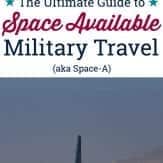
Inside: Tired of piecing together information about space-available military travel? Check out this ultimate guide to Space-A and get it all in one convenient spot!
You’ve heard about this thing called Space Available Military Travel (aka Space-A). It sounds cool, because hey, free flights, right? But it seems kind of daunting, because you have no idea what the rules are or how to get started.
Sound familiar? If you’re wondering how you can take advantage of this opportunity as a military spouse, here’s a primer to help you understand the who, what, where, and how of Space-A flying.

What is Space Available Military Travel?
Space-A travel is a privilege available to members of the community that allows us to fly free (or nearly free) on military aircraft. As Space-A passengers, we are essentially hitching a ride (or “taking a hop,” as flying Space-A is often called) on a flight that is deemed a military mission.
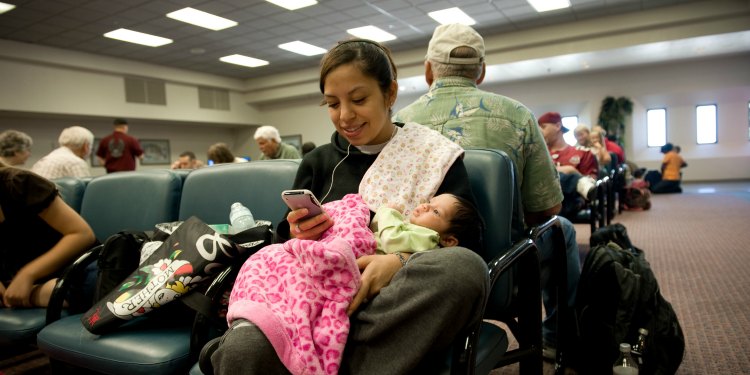
After all equipment and personnel required for the mission have been accommodated, any leftover seats may be used by Space-A passengers. Flights are entirely dependent on the mission, and the mission is the priority 100% of the time.
To put it bluntly, Space-A passengers are non-essential cargo.
Who Can Fly Space-A?
The Air Mobility Command (AMC) has a detailed summary of who is eligible to fly Space-A and under what circumstances. Space-A travelers are divided into six categories or “Cats,” based on their duty status and reason for travel. Travelers in Cat 1 are highest priority and those in Cat 6 are lowest. In other words, Space-A passengers in Cat 1 are most likely to get a seat.
I’m going to take a stab that you’re most interested in leisure travel for active duty service members and their family members, so we’re talking about travelers in the following categories:
- Active duty service members on leave traveling with or without dependents
- Spouses of active duty service members deployed for 365 or more consecutive days.
- Spouses of active duty service members deployed between 30 and 364 consecutive days
- Spouses of active duty service members stationed abroad traveling unaccompanied on Environmental and Morale Leave (EML) orders
- Unaccompanied command-sponsored spouses of service members stationed OCONUS
- Unaccompanied non-command sponsored spouses of service members stationed OCONUS
Where Can I Fly Space-A?
Depending on your category, you may be able to fly Space-A to any destination in the world to which a military mission is accepting Space-A passengers. In most cases, that means to a U.S. military base, but there are exceptions, including Patriot Express flights. There may also be a random flight to an airport or country where the U.S. does not have any military bases, but those flights are not the norm.
Before we move on, let’s clarify a few terms to make sense of this. The continental United States (CONUS) refers to the lower 48 states. Outside the continental United States (OCONUS) refers to foreign countries, Alaska, Hawaii, and other U.S. territories.
How Can I Fly Space-A Without My Sponsor?
If your sponsor is deployed (i.e. you are Cat 3 or 4), all you need is a memo from his command ( here is a sample memo ). You can travel wherever and whenever you want starting from the day your sponsor deploys throughout the duration of his deployment. Hold onto that memo, and bring it with you whenever you travel; it’s good through the whole deployment.

Travel for unaccompanied spouses in other situations has a few more restrictions.
If you are stationed overseas with your spouse (i.e. an accompanied tour of duty) and you are traveling as a Cat 5, you can only travel from OCONUS to OCONUS and between OCONUS and CONUS. In other words, you can’t take Space-A flights from one place in the lower 48 to another. The exception to that rule is if you are booked (a.k.a. “manifested”) on a flight to or from OCONUS that stops in another CONUS destination along the way. Here is a sample of the command-sponsored dependent memo you must obtain from your sponsor’s command. It’s good for 90 days or one round trip originating from the overseas duty station.
If you are stationed overseas in a location that allows EML, you can travel as a Cat 4 (i.e. higher priority) if you get an EML memo, but your travel will be restricted. You can only fly between you sponsor’s duty station and CONUS. You must take the most direct route possible. Here are sample EML memos from Pacific Command and Europe Command .
The final circumstance is if your sponsor is on an unaccompanied tour overseas (i.e. you are a non-command-sponsored dependent). You can obtain authorization to visit your sponsor and travel Space-A as a Cat 5, but you have the same restrictions as an unaccompanied EML traveler. Here is a sample of the non-command sponsored dependent memo you need for travel.
The travel memos for EML and non-command sponsored dependents are good for 90 days or one round trip.
Want more details on this unaccompanied dependent travel stuff? Here’s the breakdown with a few examples.
How Do I Get Started Planning a Space-A Trip?
The first thing to do is to figure out which bases near you have flights that could get you to your destination. In some cases, there are many possible paths you could take. For example, if you are on the East Coast and want to travel to Germany, you could fly from one of five or six bases that have regular missions into Ramstein Air Base.
On the other hand, not all military airfields are active Space-A hubs, so you will have to do some research to figure where you could originate your travel. If you don’t know which bases near you have Space-A flights, you can start by looking at this list of locations worldwide that may have Space-A opportunities.
After you’ve found the bases closest to you, begin studying their flight schedules, which most passenger terminals post on slides via their respective Facebook pages. You can find a list of passenger terminal Facebook pages on the AMC website .
In most cases, terminals post flight schedules a maximum of 72 hours in advance. Exceptions include certain Naval bases, which may share a week’s worth of missions, and schedules for Patriot Express flights . Terminals that have Patriot Express flights post schedules for an entire calendar month. The schedule is usually available a few days before the end of the month for the following month (for example, the April schedule will be available in the last few days of March).
What Do the Facebook Slides Tell Me?
From the slides, you can see where the flights are going, what time passengers must be there (Roll Call), and how many seats may be available for Space-A passengers.
Passenger terminals also post historical slides showing recent departures and how many Space-A passengers got seats. Reviewing the history of flights in and out of a particular base and comparing how many passengers tried to get on vs. how many got seats is useful right before you are hoping to catch a flight. It will give you an idea of whether there is a backlog of folks waiting to depart or whether most passengers have cleared out of the terminal. Here is more detailed information about how to read Space-A flight schedules on Facebook .
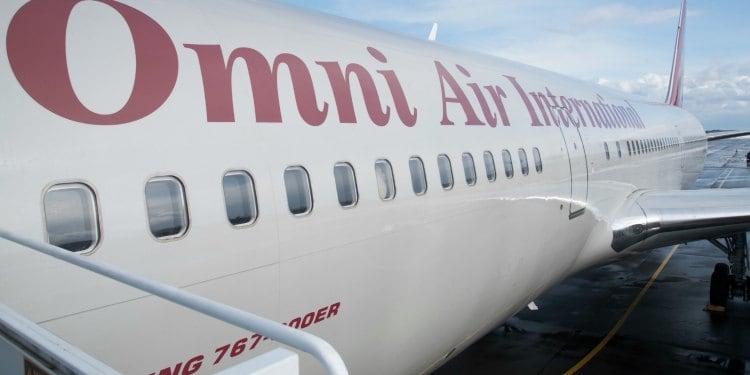
You may have to watch the schedules for several weeks or even months to get an idea of where missions fly most frequently and how likely a Space-A passenger in your category would be to get a seat.
If you’re having trouble piecing together a flight plan that could get you to your destination, you can also ask for advice in the Space-A Travelers Facebook group . To join this group, you will need to verify your military affiliation and agree to read the background information in the pinned post. Before asking a question, try searching for the topic in the discussion. With more than 62K members, there are few questions that no one has asked.
Space-A Signup
Now that you have an idea of what bases you might want to fly to and from, it’s time to sign up.
Signup refers to the process of notifying passenger terminals that you would like to fly Space-A from their location. There are several ways to sign up:
- In person at the terminal
- Via e-mail or fax
- Using the Take-a-Hop app, which has a one-time fee of $6.99.
You don’t have to use the official Space-Available Travel Request form, but this sample shows what information you need to provide. Be sure that when you specify the number of seats required, you include all members of your family, including babies. Space-A flights do not have a “lap child” policy.
When Can I Sign Up?
Priority within a category is based on signup date and time, so the earlier you sign up, the better.
Signup rules vary by circumstance.
- Active duty service members (Cat 3) can sign up starting on the first day of leave. The signup is good for the duration of the leave period.
- Spouses of deployed service members can sign up 10 days before the first day of the deployment. The signup is good for 60 days.
- Unaccompanied Spouses in other situations discussed above can sign up as soon as they have the required memo. Signups are good for 60 days.
At Which Bases Should I Sign Up?
No matter what category you’re in, you should sign up at every base you may want to depart from.
You can sign up at as many bases as you want. If you’re signing up via e-mail, you can send a single message and copy every terminal at which you want to sign up. Many terminals will not reply to confirm receipt of your signup. Be sure to bring a copy of your signup when you go to the terminal to mark yourself present for the flight.
What to Do on the Day of Your Flight
You see a flight you want to take, and you’re ready to give this Space-A thing a shot. Now what? Here’s a rundown of the actual travel process.
Marking Yourself Present
This means going to the terminal in person to let them know you are “competing” for a flight. You can mark yourself present up to 24 hours in advance of the Roll Call time, but you don’t really need to do it until an hour or two beforehand. Marking yourself present early does not give you higher priority than other passengers, but you must do it prior to the start of Roll Call.
When you mark yourself present, bring all of your travel documentation, including any required travel memos and a copy of your signup e-mail to prove the date and time of signup. Confirm that the passenger terminal has recorded the correct number of passengers traveling.
This is the time listed on the Facebook slides, and it refers to the passenger terminal staff calling the names of the passengers selected for a flight. They will start with the highest category and work their way down.
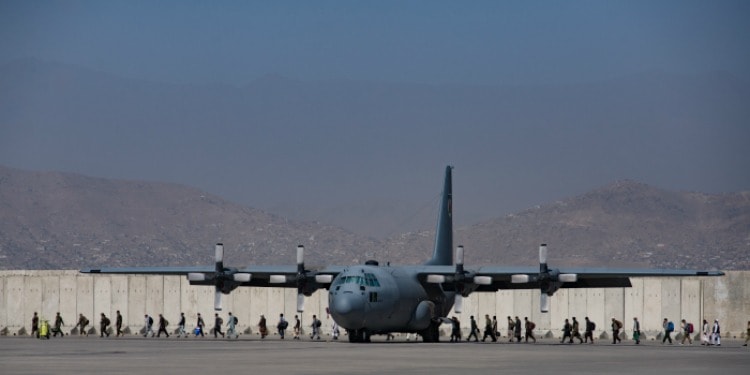
If they call your name, go to the desk with your family members’ military IDs, passports (if headed for an OCONUS destination), and appropriate travel authorization memo, and confirm that all passengers are in the terminal with bags packed.
Baggage Check/Getting Manifested
When it’s time to check bags, all travelers in your family and all of your luggage must be present. On most flights, each passenger can check two bags of up to 70 lbs each. You can also check car seats, which do not count towards your baggage allowance. On some smaller aircraft, weight limits may be as low as 30 lbs. The Air Mobility Command website has detailed information on baggage allowances.
During baggage check, you can request a meal, (if meals are available — usually a box lunch with sandwich, chips, cookie, and drink), which costs $5-$10, depending on the location. Once you’ve checked your bags and have your boarding passes, you are “manifested” on the flight. The terminal staff will tell you the estimated boarding time, but it often changes without notice, so stay in the terminal.
Once they announce boarding, all passengers go through security. Military passenger terminals follow Transportation Security Administration regulations, so you have the same restrictions for carry-on items as on civilian planes. You sit in a secure area of the terminal until the bus arrives to take you to the aircraft. You board the plane from the tarmac.
What to Expect on the Flight
Patriot Express flights are very similar to civilian flights. They have regular airplane seats and in-flight service.
For all military aircraft, two tips apply:
- Dress in layers . It can be very cold or very warm, depending on the type of aircraft, where you’re sitting, and pilot preference. I see many passengers (especially children) wearing shorts, but I don’t recommend it unless you have a pair of sweatpants handy.
- Bring hand wipes. The lavatory sinks generally don’t have running water. Instead, there is a pile of antiseptic wipes, but often not enough to last for the entire flight.
Tips for Traveling with Kids
All passengers over the age of 10 need a military ID. If you have children under 10, bring their passport or a printout from Milconnect that shows their military ID number. This second requirement was implemented in 2017, and some travelers may tell you that the passenger terminal didn’t ask for it, that a birth certificate was fine, etc. While that may be true, it’s best to cover your bases and bring the printout.
As with any travel with kids, bring plenty of activities to keep them entertained. It can be hard to predict how much time you will spend waiting in the terminal, so be prepared with movies downloaded to your tablet, cards, books, and other travel-friendly games.
You should also bring a stash of snacks. Even if you ordered a box meal, you won’t get it until you’re onboard, and you don’t want to be stuck in the terminal with hungry kiddos. The snack bars in the terminal have a way of being under construction the one time you didn’t plan ahead with snacks of your own.
Ear protection in the form of headphones – or even earmuffs – is a good idea. The flight crew will give you foam earplugs, but they may not be comfortable or suitable for young children.
Free Flights Sound Too Good to Be True. What’s the Catch?
The main challenge with Space-A travel is that it’s unpredictable. Missions can change at any moment. The pilot can decide to leave early or not to take any Space-A passengers. Or the aircraft’s destination can change after you’re already in the air.
Add these considerations to the fact that aircraft (some types more than others) often have maintenance issues that can cause a flight to be delayed by a few hours or several days. Unlike with a commercial flight, if any of these things happen, you have no recourse as a Space-A passenger. There is no such thing as being rebooked on a later flight. If you don’t get on the flight you wanted, you might not have any other Space-A options in the foreseeable future.
All these warnings are to say that Space-A is not a good choice when you have a short period of leave or when you really need to be somewhere by a certain time, whether that’s for a wedding, a holiday, a family emergency, or a work commitment back home.
Final Advice
You can increase your chances of getting a seat on a Space-A flight by traveling outside of the busiest seasons. The most difficult times to fly Space-A are during the summer PCS season and the winter holidays.
Think of Space-A travel as an adventure. Along the way, you will meet other travelers who will remind you how helpful and supportive the military community can be. You may also have the chance to fly in a military plane, which is not something most Americans get to experience, and honestly, it’s pretty cool. If you think of your journey in this way, you will be better-prepared to handle any parts of the process that don’t go as planned.
Even if you’ve read the above information three times, you might still have questions. The best thing to do is to keep reading as much as you can about flying Space-A. Join the Space-A Travelers Facebook group and follow the discussions. I guarantee that many of the questions asked by other group members will apply to you, and after a while, you will find that you know the answers!
Keep following the Facebook slides to get a feel for where flights are going and how many Space-A travelers are getting seats. You may start to see patterns, either weekly or seasonally.
Finally, before you plan a major family vacation using Space-A, consider doing a dry run. Try a short trip within CONUS to help you learn the process. That way, you will know the ropes and feel more comfortable planning a bigger adventure.
Want more on military life?
- 9 Hidden Ways to Save Money at the Commissary and PX
- 10 Things a Military Spouse Should Have in her Car at All Times
- Military Base Gate Etiquette: 10 Small Ways to Avoid a Giant SNAFU
- 7 Myths About Tricare for Military Families…Debunked
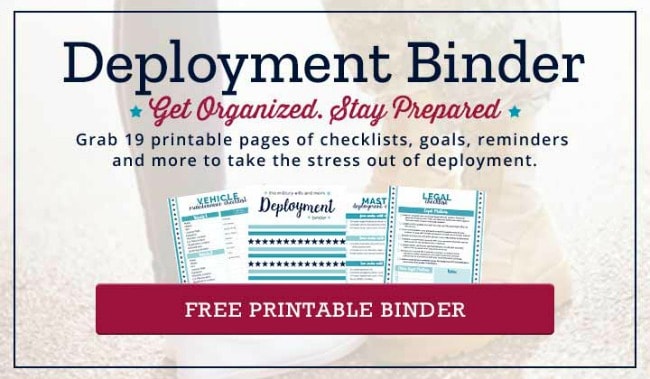
About Stephanie Montague
Stephanie Montague is the founder of Poppin’ Smoke (www.poppinsmoke.com), a website designed to help members of the military community use their military benefits to travel. Stephanie and her husband have been traveling the world since he retired from the Army in 2015. Through Poppin’ Smoke, Stephanie shares everything she and her husband learn about traveling Space-A, using military benefits and facilities while abroad, and getting the most out of travel experiences.
Reader Interactions
I’m interested in traveling. Where and who do I email?
All military Space-Available Facebook Pages have contact information. The email, and telephone numbers are listed.
The DOD, Congress and the Veterans Affairs Committee should amend the bill to allow full worldwide travel eligibility for 100% Disabled Veterans on military space available flights to all destinations.
Amendment which would allow for full privilege of travel worldwide would be of no additional cost to the DOD. I do believe the USA government should grant the full privilege of worldwide travel on Space A flights to this small group of Veterans.
The sacrifices the men and women have made should never go unnoticed. The men and women who served our country, and returned home injured, have already paid a big price on our behalf. If there is any space available for travel on a military aircraft to worldwide locations, there is no logical reason whatsoever why our 100 percent disabled military veterans should not be eligible to be on those flights.
How do you get off base once you arrive at your destination?
Leave a Comment Cancel reply
Your email address will not be published. Required fields are marked *
More Popular Posts
Here’s what military families are saying about Military Wife and Mom…
Sarah rohrer.

I already found useful tips to help my spouse. I feel connected even though Navy life keeps us from spending time together before deployment arrives. Great course!”
Melinda Walker

The encouragement and the helpful reminders are invaluable.
Carlee Marlow

I’m more confident. I now have tools in my belt to work through things, instead of feeling helpless. I loved the videos…hearing Lauren’s side of it and her personal experience using the tools she gave us. THANK YOU! Lauren, you have put my mind at ease to know that there are tools out there and ways to get through this!

- Space-A
- Weather
Military Space-Available Travel
Space a travel.
Space Available Flight, more commonly referred to as Space-A travel or military hops, is a privilege afforded to military service members, their families, and service retirees. The system accommodates these passengers by letting them fill seats on Air Force air transport flights that would otherwise be left empty. The seats are made available on a space-available basis. Unused seats on DoD-owned or controlled aircraft are made available once all the space-required (duty) passengers and cargo have been accommodated. If you want to know where you can travel, check out our Space-A Travel Locations List , complete with contact information
Space-A travelers may sign up for travel 60-days in advance of the desired travel date. Passengers are categorized by priority of travel and are processed in priority order by their sign-in time (Julian date). For leisure travel, Reservists are placed in category VI, which is a rather low priority. (Official duty passengers have priority over Space-A travelers.)
Space required passengers or cargo may require the removal of Space A passengers at any point. If removed en route, you may reregister with your original date and time of registration. Passenger Service will assign a new date and time to any country or destination you change or add on your application.
Always be prepared to purchase onward or return commercial transportation, meals, and lodging. Remember Space A seats are normally identified as early as 2-3 hours and late as 30 minutes prior to departure. It is recommended you check with the passenger service center for the space available show time for the flight you wish to take.
AMC Passenger Terminals
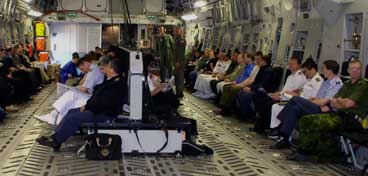
Registration
Passengers must register for travel at Passenger Service Centers in the passenger terminal in person and/or may also sign-up in writing by fax, mail, or E-mail. Sponsors who register in person for family members traveling with them should present all required documents: Identification cards (DD Form 2, Armed Forces Identification Card), passports, immunization records, and visas when required by the DoD Foreign Clearance Guide. Travel documents must be presented when selected for travel. Travelers may select up to five countries. We recommend the “all” choice for the 5th destination so that the traveler may take advantage of unscheduled unique travel opportunities.
Have an iPhone or iPad? Download the premiere Space-a App by Take-A-Hop:
Space-A Eligibility
The following types of travelers are authorized to use Space-A airlift. The regulation DoD 4515.13-R contains a complete listing of eligible passengers by category, and the AMC site lists the majority of information you will need to plan your trip. Required documentation for each traveler is also listed below. Please have those documents ready for review when selected for travel:
- Active Duty Uniformed Services Member (includes National Guard and Reserve members on active duty in excess of 30 days and Cadets and Midshipmen of the U.S. Service Academies): DD Form 2 (Green), US Armed Forces ID Card (Active), Form 2 NOAA (Green), Uniformed Services ID and Privilege Card (Active), or PHS Form 1866-3 (Green), US Public Health Service ID Card (Active), and a valid leave authorization or evidence of pass status.
- Retired Uniformed Service Members: DD Form 2 (Blue), US Armed Forces ID Card (Retired), DD Form 2 (Blue) NOAA, Uniformed Services ID Card (Retired), or PHS Form 1866-3 (Blue), US Public Health Service ID Card (Retired).
- National Guard and Reserve Members: Authorized Reserve Component Members (National Guard and Ready Reserve) and members of the Standby Reserve who are on the Active Status List: DD Form 2 (Red), Armed Forces of the United States ID Card (Reserve) and DD Form 1853, Verification of Reserve Status for Travel Eligibility.
- Retired Reservists Entitled to Retired Pay at Age 60: DD Form 2 (Red) and a notice of retirement eligibility as described in DoD Directive 1200.15. If the automated DD Form 2 (Red) has been issued, the member is registered in his or her service personnel system as a Reserve retiree entitled to retired pay at age 60, and a notice of retirement is not required.
- Retired Reservists Qualified for Retired Pay: DD Form 2 (Blue), US Armed Forces ID Card (Retired), DD Form 2 (Blue) NOAA, Uniformed Services ID Card (Retired), or PHS Form 1866-3 (Blue), US Public Health Service ID Card (Retired).
- On Active Duty for 30 Days or Less: DD Form 2 (Red), orders placing the Reservist on active duty, and a valid leave authorization or evidence of pass status.
- ROTC, Nuclear Power Officer Candidate (NUPOC), and Civil Engineer Corps (CEC) Members: When enrolled in an advanced ROTC, NUPOC, or CEC course or enrolled under the financial assistance program: DD Form 2 (Red) and DD Form 1853.
- Family Members of Uniformed Services Members: DD Form 1173, United States Uniformed Services Identification and Privilege Card.
- EML Travelers: EML travel orders issued in accordance with Combatant Command procedures.
- Disabled and Widows/Widowers: Currently, 100 percent disabled veterans and widows of service members are not eligible to use Space-A travel. (Visit source website)
Space A Eligibility Frequently Asked Questions
I’m a grey area retiree, where can i fly.
Per the DOD reg , Table 6.1, Item 35, a Grey Area Retiree (Reservist who is eligible for retirement pay at 60 years of age but not yet 60 years old), can fly within the CONUS and directly between the CONUS and Alaska, Hawaii, Puerto Rico, the US Virgin Islands, Guam, and American Samoa (Guam and American Samoa travelers may transit Hawaii or Alaska); or traveling within Alaska, Hawaii, Puerto Rico or the Virgin Islands. The DoD reg , Table 6.1 does not authorize Grey Area Dependents to fly Space-A. (Reference PASSENGER SERVICE UPDATE DTG: 261800Z OCT 01 para 1.K)
Can 100% Disabled Veterans Travel Space-A?
Despite rumors to the contrary, 100 percent disabled veterans in possession of DD form 1173 or 2765 identification cards are not entitled to space-a travel aboard DoD aircraft. Any changes to space- a eligibility rules will be published as an immediate change to DoD 4515.13r and advertised accordingly (Reiteration HQ AMC/DONP 091704z Mar 99 and Reference PASSENGER SERVICE UPDATE DTG: 261800Z OCT 01 para 1.H).
Are Widows/Widowers Eligible to Travel Space-A?
Widows/widowers of active duty/retired military personnel are not entitled to space-a travel aboard DoD aircraft. Any changes to space- a eligibility rules will be published as an immediate change to DoD 4515.13r and advertised accordingly (Reiteration HQ AMC/DONP 091704z Mar 99).
Can a ROTC Cadet Fly Space-A?
Yes. When enrolled ( I read “contracted” versus “taking” ROTC) in an advanced ROTC, NUPOC, or CEC course or enrolled under the financial assistance program, on presentation of the following valid: DD Form 2 (Red) and DD Form 1853. Category of Travel is Cat 6 and travel is authorized ONLY within and between the CONUS, Alaska, Hawaii and the US. territories.
Space A Travel Categories
The following is a partial listing of eligible individuals and their category of travel. A complete listing of eligible passengers by category is contained in DoD 4515.13-R, Air Transportation Eligibility.
Emergency Leave Unfunded Travel. Transportation by the most expeditious routing only for bona fide immediate family emergencies, as determined by DOD Directive 1327.5. This travel privilege shall not be used in lieu of a funded travel entitlement.
- Uniformed Services members with emergency status indicated in leave orders.
- U.S .citizen civilians stationed overseas and employees of the Uniformed Services/Non-appropriated Fund (NAF) activities and whose travel from the CONUS, Alaska or Hawaii was incident to a PCS assignment at NAF expense.
- Dependents of members of the Uniformed Services when accompanied by their sponsor.
- U.S. citizen civilian employees of the Uniformed Service, stationed overseas
- U.S. citizen civilian employees of the DoD stationed overseas and paid from NAF, or
- American Red Cross full-time paid personnel serving with a DOD Component overseas.
Sponsors in an Environmental Morale Leave (EML) status and their dependents traveling with them, also in EML status. “Sponsors” includes:
- Uniformed Services Members.
- U.S. citizen civilian employees of the Armed Forces who are eligible for Government-funded transportation to the United States at tour completion (including NAF employees).
- American Red Cross full-time, paid personnel on duty with DOD Component overseas.
- USO professional staff personnel on duty with the Uniformed Services.
- DODDS Teachers during the school year and for Employer-approved training during recess periods.
Ordinary Leave, Close Blood or Affirmative Relatives, House Hunting Permissive TDY, Medal of Honor Holders, Foreign Military, and Others.
- Uniformed Services members in a leave or pass status, other than emergency leave, including members of the reserve components on active duty, in leave or pass status.
- Dependents of a member of the Uniformed Services when accompanied by their sponsor in a leave status.
- Uniformed Services members traveling under permissive TDY orders for house hunting incident to a pending PCS.
- One dependent may accompany a Uniformed Services member.
- Medal of Honor recipients and their dependents (when accompanied by their sponsor). Except for active duty, traveler shall present a copy of the Medal of Honor Award Certificate.
- Foreign cadets and midshipmen attending U.S. Service academies, in a leave status.
- Foreign Exchange Service members on permanent duty with the DoD, when in a leave status.
- Dependents of foreign exchange Service members on permanent duty with the Department of Defense when accompanied by their sponsor.
Unaccompanied Dependents on EML and DODDS Teachers on EML During Summer.
- Dependents traveling under the EML Program, unaccompanied by their sponsor.
- DODDS teachers of dependents accompanied or unaccompanied traveling under the EML Program.
Permissive TDY (Non-House Hunting) Students, Dependents and Others.
- Military personnel traveling on permissive TDY orders other than for househunting.
- Dependents (children) who are college students attending in residence at an overseas branch of an American (U.S) university located in the same overseas area in which they reside, command sponsored, stationed overseas with their sponsor, who is: (1) A member of the Uniformed Services; (2) A U.S. citizen civilian employee of the Department of Defense (paid from either appropriated funds or NAF); or (3) An American Red Cross full-time, paid employee serving with the Department of Defense.
- Dependents, command-sponsored, stationed overseas with their sponsor who is: (1) A member of the Uniformed Services; (2) A U.S. citizen civilian employee of the Department of Defense (paid from either appropriated funds or NAF); or (3) An American Red Cross full-time, paid employee serving with the Department of Defense. Unaccompanied travel is permitted to and from the nearest overseas military academy testing site to take scheduled entrance examinations for entry into any of the U.S. Service Academies
- Command sponsored dependents (18 years of age) of Uniformed Services members who are stationed overseas may travel unaccompanied from the sponsor’s PCS duty location to the CONUS and return. Travel is also authorized within the overseas theater. Travel cannot be between two overseas theaters (i.e., from Germany to Japan). Dependents must have command-sponsored documentation signed by the Commander verifying command sponsorship. Documentation is valid for one round trip.
Retired, Dependents, Reserve, ROTC, NUPOS and CEC
- Retired Uniformed Services members
- Dependents of retired Uniformed Service members, when accompanied by their sponsor.
- Dependents, command sponsored, stationed overseas with their sponsor who is: (1) A member of the Uniformed Services; (2) A U.S. citizen civilian employee of the Department of Defense (paid from either appropriated funds or NAF); or (3) An American Red Cross full-time, paid employee serving with the Department of Defense. Unaccompanied travel is permitted to the U.S. for enlisting in one of the Armed Forces when local enlistment in the overseas area is not authorized. If an applicant for Military Service is rejected, return travel to the overseas area may be provided under this eligibility
- Authorized Reserve component members and authorized Reserve component members entitled to retired pay at age 60 (gray area retirees) traveling in the CONUS and directly between the CONUS and Alaska, Hawaii, Puerto Rico, the U.S. Virgin Islands, Guam, and American Samoa (Guam and American Samoa travelers may transit Hawaii or Alaska); or traveling within Alaska, Hawaii, Puerto Rico or the U.S. Virgin Islands
- Newly commissioned ROTC officers who are awaiting call to extended active duty. Travel is authorized within and between the CONUS, Alaska, Hawaii, and the U.S. territories.
Space-A Points:
While the precise procedures for making flight arrangements may vary from one air terminal to another, the first step is to find out what destinations you can travel to from the air terminals near you. The simplest way to get a list of destinations is to call the terminal in your area. Terminals typically provide either a voice or recorded listing of upcoming flights. On request, most terminals can also fax you a copy of their flight schedule.
Once you have made your travel plan, you can sign up for flights in several ways. You always have the option of going to a terminal in person. However, in many cases you do not even have to leave your home. Flight requests can be made by mail, by telephone, via the Internet, or by facsimile. Upon sign-up, travelers are assigned a travel category and compete for seats in that category, based on the date and time of sign-up. Passengers stay on the flight register for either 60 days, the duration of their travel authorization, or until they get a seat. Once registered, passengers can review their reservation status any time.
There can be drawbacks to Space-A travel. As a Space-A traveler, your flight request is processed on a first-in, first-out basis within your assigned category of travel. You must be aware of the following facts when you decide to fly Space-A:
Official duty passengers and priority cargo have priority over Space-A passengers. If your flight has more than one leg, you can get bumped off of your plane at the end of any leg.
- Reservations cannot be made for any portion of a trip. Flexible travel plans are necessary.
- Reservists and retirees are classified as Category VI passengers.
- Long, uncomfortable and frequently costly waiting periods may be encountered at any point of your journey.
- The U.S. Government is not obligated to provide transportation for Space-A passengers to or from desired destinations.
- Summer months are peak travel times.
- You will need to travel with either a credit card or carry sufficient funds to pay for lodging, meals, local transportation, and even commercial airfare, if necessary.
- You must travel light. Only duty passengers can pay for excess baggage.
Baggage Allowances
Each passenger may check two pieces of checked baggage, 70 pounds each, up to 62 linear inches in size. Family members may pool their baggage allowances. Hand-carried baggage must fit under the seat or in the overhead compartment, if available. Standard issue B-4 duffle bags are authorized to weigh 100 pounds and still considered one piece. Only one of these bags will be allowed.
C9 Baggage: Limited to two pieces at 55 pounds combined weight.
NOTE: Baggage weight may be limited due to type of aircraft or other restrictions. Check with your Passenger Service Center for more information.
Air Force Billeting
If you’re looking for someplace to sleep for the night, check billeting availability through the services lodging list web page.
Frequently Asked Questions
How long does my name stay on the space a list.
All travelers remain on the register 60 days after registration, for the duration of their leave orders authorization, or until they are selected for travel, whichever occurs first. Revalidation has been eliminated.
What is country sign-up, and how does it affect me?
Under this program, you may sign up for five different countries rather than five different destinations. AMC Passenger Terminals are no longer accepting the option for the “ALL” sign-up – in the past, this would make a passenger eligible for all other destinations served. You now have to sign up for individual countries.
What is remote sign-up?
Remote sign-up allows passengers to enter the backlog by telefaxing copies of proper service documentation along with desired country destinations and family members’ first names to the aerial port of departure. The telefax data header will establish date/time of sign-up; therefore, active duty personnel must ensure the telefax is sent no earlier than the effective date of leave. Terminals are not responsible for faxes not received. Mail entries will also be permitted. Some of terminals now accept e-mail sign-up. The original date and time of sign-up shall be documented and stay with the passenger until his or her destination is reached. On reaching destination, the passenger may again sign-up for space available travel to return to home station.
NOTE: If applicable, a statement that all required border clearance documents are current, is required.
What is self sign-up?
Self sign-up is a program that allows passengers to sign-up at a terminal without waiting in line. Most locations now provide self sign-up counters with easy to follow instructions for registration. Active duty personnel must ensure sign-up takes place no earlier than the effective date of leave. If your travel will take you to a foreign country, ensure border clearance documentation is up to date. If you are unsure, verify it with a passenger service representative on duty.
How can I find where my name is on the Space A register?
Each terminal maintains a Space A register (organized alphabetically, by priority and the date and time of registration for travel) that is updated daily. The register is conveniently located in the terminal and directly accessible to you. Travelers may call the terminal direct to find where they stand travel wise.
What are some guidelines on baggage?
Travel light, take only essentials. Do not place valuables, medicine, or important documents in your check baggage. Be sure your name and current address are on and inside your bags. Terminals have baggage ID tags available for you to use.
Can my pet travel with me on a Space A flight?
No. DoD has reserved pet shipments for passengers in permanent change of station (PCS) status only. Additionally, travel with pets would be difficult at best due to limited aircraft pet spaces, pet import documentation requirements, and the possibility of quarantine in the event of an aircraft divert. The short answe is: if you are on an AMC aircraft traveling as part of a PCS, you may take pets with you, if you are on Space-A Status (Leave, R&, etc.) then you may not.
Will Space A travel cost much?
In general, no. Some terminals must collect a head tax or a federal inspection fee from Space A passengers on commercial contract missions. Meals may be purchased at a nominal fee out of most air terminals while traveling on military aircraft.
What facilities are available at terminals (nursery, Base Exchange, snack bar)?
Facilities at most military terminals are generally the same as commercial facilities. Facilities include exchanges, barber shops, snack bars, pay television (free television lounge in some military terminals), traveler assistance, baggage lockers or rooms, United Services Organization (USO) lounges, and nurseries (at major terminals). The type of facility available will vary according to the terminal size and location.
NOTE: Most passenger terminals close at night. Space A travelers should be prepared to defray billeting expenses.
Tips for Traveling Space-A
- Plan, be flexible, be patient. As a rule of thumb, military ports offer more travel opportunities than commercial gateways (i.e., travel chances are better to Europe from Dover AFB DE than Baltimore-Washington IAP).
- If possible, travel at off-peak Space A travel periods (i.e., peak periods are the summer months after school is dismissed and Christmas holiday season). Historically, February-March and October-November are low travel periods.
- Be as flexible as possible in choosing a destination. If you want to get to Ramstein AB, Germany, consider a flight into Spangdahlem AB, Germany, or even RAF Mildenhall, United Kingdom, as an alternative. At Mildenhall, try for another flight bound for Germany.
- There is a head tax on CONUS outbound or federal inspection fee on CONUS inbound international commercial charters.
- When traveling Space A with young children, prepare for possible delays along the way where baby supplies may not be readily available. A good supply of games and books is also recommended. Be aware that a baby’s ears, like an adults, are sensitive to altitude pressure changes.
- Space A is just that—space that is available after all mission requirements are fulfilled. Military aircraft are subject at all times, first and foremost, to DoD mission response.
The following regulations govern AMC travel; please refer to them as the source documents regarding AMC travel.
- Passports, Visas, ID cards, Letters
- AMCI 24-101, Volume 14
- Air Transportation Eligibility DOD 4515.13R
- DTR, Chapter 103 – Passenger Movement
- GSA City Pairs
- Military Sim Cards
Questions? Contact Us

- Cover Letters
- Jobs I've Applied To
- Saved Searches
- Subscriptions
- Marine Corps
- Coast Guard
- Space Force
- Military Podcasts
- Benefits Home
- Military Pay and Money
- Veteran Health Care
- VA eBenefits
- Veteran Job Search
- Military Skills Translator
- Upload Your Resume
- Veteran Employment Project
- Vet Friendly Employers
- Career Advice
- Military Life Home
- Military Trivia Game
- Veterans Day
- Spouse & Family
- Military History
- Discounts Home
- Featured Discounts
- Veterans Day Restaurant Discounts
- Electronics
- Join the Military Home
- Contact a Recruiter
- Military Fitness
Space Available Flight: Basic Rules & Regulations

- Leave Status for Travel: Uniformed Services members on active duty must be in a leave or pass status to register for space-available travel, remain in a leave or pass status while awaiting travel, and be in a leave or pass status the entire period of travel. DoD civilian employees must be in a leave or nonduty (i.e., weekend or holiday) status to register for space-available travel. If in a nonduty status, leave must have been approved for the first normal working day following the nonduty period. A leave status must then be maintained while awaiting travel and for the entire period of travel. Those members in appellate leave status are not authorized space-available travel privileges.
- Space available passengers travel only after all duty cargo and passengers have been accommodated. All available seats are released, but there is no guaranteed movement in the preferred time frame, Have sufficient funds available to complete travel using commercial transportation if necessary.
- Space available (Space A) eligible travelers may not use their privilege for personal gain or in connection with business enterprises or employment. Space A travel may not be used to establish a home or when international or theater restrictions prohibit such travel.
- Dependents traveling on Space A: Dependents of active duty and retired military personnel are authorized CONUS travel with their sponsor as a result of the 2003-2004 Dependent CONUS test. All other dependents may not travel within the CONUS except as follows:
- Dependents of active duty and retired uniform service military personnel, when accompanied by their sponsor (must have emergency status indicated in leave orders). Dependents may travel on domestic leg segments of international flights during the beginning or end of their international flight. For example, if a flight originates in Texas, stops in California as part of the mission, and then continues overseas, family members eligible for travel may fly from Texas to the overseas area on the flight. They may not, however, travel just simply Texas to California (unless traveling with their sponsor as previously noted).
- Except EML, Emergency Travel, and Command Sponsored Category V, family members must be accompanied by the sponsor to fly Space A.
- Space A seats are normally identified as early as 2-3 hours and as late as 30 minutes prior to departure. Recommend checking with the passenger service center for the space available show time prior to departing the terminal. Be ready for immediate processing and boarding.
- Travelers are assigned a category upon registering for travel and compete for seats within categories based on the date and time of registration. This date and time of sign-up is valid through to destination; a new date and time are assigned for return travel. Travelers may stand by for any available flight.
- Space required passengers or cargo may require the removal of Space A passengers at any point. If removed en route, travelers may re-register with their original date and time of registration. Passenger agents will assign a new date and time to any country changed or added to an application. Names of all originating space available passengers who depart on a flight will be removed from all destinations. Travelers should be prepared to purchase onward or return commercial transportation, meals, and lodging.
- Travelers remain on the register for 60 days or the duration of their leave orders or authorization, whichever occurs first.
- Baggage: Each passenger may check two pieces of checked baggage, 70 pounds each, up to 62 linear inches in size. Family members may pool their baggage allowances. Hand-carried baggage must fit under the seat or in the overhead compartment, if available. NOTE: Baggage weight may be limited due to type of aircraft or other restrictions.
You May Also Like
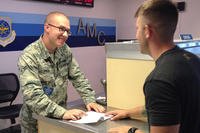
Who is eligible to travel Space A? We have all the info here!
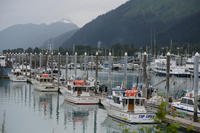
Military bases worldwide are home to some truly memorable vacation spots, camping areas and affordable lodging.

The Armed Forces Vacation Club offers affordable condominium rentals at resorts around the world on a space available basis.
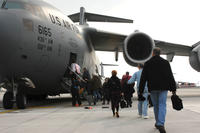
Here are some of the most common Space A questions and their answers.
- Entertainment
- Military Equipment
- Outdoor Guide
Select Service
- National Guard
Popular Discounts Articles

Between dresses, shoes and accessories, going to a military ball can be costly. But it doesn't have to be.

Your military service can net you big savings at car dealerships and beyond.

AFN is adding something more exciting for viewers: all 272 regular season NFL games and complete postseason coverage.

Whether you live in Hampton Roads or you're just visiting, take advantage of the following military discounts.

Here are some great deals for military families to find cheap lodging on the go.

GET YOUR FREE GUIDE TO MILITARY SPACE-A TRAVEL
Subscribe to get the 45-page Guide and learn all about Space-A flights and lodging.
You will also receive news and updates tailored to military travelers like you!

703-237-0203
Travel the World using your Military Benefits™
Military News

Save $130 on Resort Vacation Certificates - Now Through 9/22 | AFVC

70 Years of Flight: The C-130's Legacy, Future

Your Web Subscription Options for Militaryliving.com

Jim Creek Wilderness Recreation Area, WA | Featured Military Camping Facility

Italian Wine and Dine Weekend at Edelweiss Lodge and Resort

Military Space-A Air Terminal Availability From September 11th to September 18th, 2024

Purchase Options
Your purchase options to get Military Living® Travel Information
Military Lodging, Military Camping, Military Space-A Air
Web Subscription for Immediate Web Access Includes Worldwide Travel Planner Map & all 5 books 2,000+ pages!
Subscriber travel guides.

Web subscribers should log in and click the books below to view our online travel guides.
Military Living Travel Planner

Get the Latest FREE Military Travel News Straight to Your Inbox
Subscribe to Mail Call, our free newsletter to receive news and updates!
Thanks for signing up!

We will never sell or rent your email address, and no spam will ever be sent.
Click for How-To Videos
& Other Website Help

Military Living® Publications GUARANTEES the satisfaction of your purchase with a 30-day money back guarantee. If you are unhappy with our printed travel guides for any reason, we will offer you a full refund and pick up the book at our expense. For digital purchases, we will give you a refund if you are unhappy with us at any time. Our team of Military Spouses and Retirees stand behind our products and your experiences for the last 55 years.

About iOS 18 Updates
iOS 18 brings new ways to customize the iPhone experience, relive special moments, and stay connected. Customize your iPhone further by arranging your Home Screen, your Lock Screen, and Control Center in all-new ways. Photos delivers the biggest redesign ever to make it even easier to relive your special moments. Staying connected with friends and family is even better with new ways to express yourself in Messages. A new hiking experience in Maps and updates to Wallet enable you to explore the world further. iOS 18 also brings new features to Safari, Journal, Notes, Phone, and so much more.
For information on the security content of Apple software updates, please visit this website: https://support.apple.com/100100
Home Screen
Flexible arrangement to place app icons and widgets in any open position on the Home Screen, such as along the bottom or off to the side, to create the ideal layout for each page
Dark icons give your Home Screen look a darker aesthetic, and can automatically adjust when your iPhone enters Dark Mode, or always appear dark
Color tinting lets you apply any color to app icons and widgets or have iOS suggest a color that complements your wallpaper
Larger icons allow you to make all the app icons and widgets on your screen appear larger, removing the name underneath
Photos app redesign features the biggest update ever with a simplified layout that puts everything into a single view
Collections automatically organize your library by helpful topics that you can browse in a collage, grid, as a memory, or on a map
Customization options let you reorder, add, and remove Collections rows, and add just the items you want to Pinned Collections to keep within easy reach
Groups in People and Pets include photos of your favorite people or pets who frequently appear together
Trips automatically organizes your travels into collections so you can relive each trip
Recent Days lets you view your recent photos organized by day without clutter like screenshots
Filter button in the grid helps you reduce clutter by filtering to specific media types, your favorites, or by hiding screenshots from the view
Video speed control lets you slow down high frame rate video content with in and out points
Utilities includes additional helpful collections like Documents, Receipts, QR codes, and more, and items you’ve recently edited, viewed, and shared
Recovered album in Utilities surfaces images that are on your device but were not previously visible due to database corruption in a locked album
Messages via satellite lets you message friends and family when you are without cellular or Wi-Fi connection by connecting to a satellite in space (iPhone 14 and later)
Text effects bring your conversations to life by visually amplifying any letter, word, phrase, or emoji in iMessage with dynamic, animated effects like explode, ripple, and nod
Text formatting lets you add bold, underline, italics, and strikethrough to any letter, word, or phrase in iMessage
Emoji and sticker Tapbacks allow you to react to a message using any emoji or sticker, giving you access to the Tapbacks you and your friends send the most with just a swipe
Send Later enables you to compose a message now and schedule it to send later
RCS messaging support includes delivery and read receipts, higher resolution photos and videos for messaging people without an iPhone and requires carrier support
Control Center
Redesigned Control Center features convenient groups of controls, the ability to arrange controls just the way you want, and support for controls from third-party apps
Groups of controls can be accessed by continuously swiping from the right edge, including your most used controls, Home controls, Media Playback and Connectivity, with the option to build out entirely new groups too
Controls gallery displays the full set of available controls, including controls from third-party apps, that you can add right into the group you choose
Resizable controls let you drag from the lower right of a control from within Control Center
Lock Screen
Custom Lock Screen controls let you choose controls from the controls gallery from your favorite apps
Action button can be customized with controls from the controls gallery (iPhone 15 Pro and iPhone 15 Pro Max)
Font options allow you to customize the time with 10 new numeral scripts in Bangla, Gujarati, Gurmukhi, Kannada, Malayalam, Meitei, Odia, Ol Chiki, Telugu, and Urdu
Distraction Control helps you hide items on a webpage that you find disruptive to your browsing
Highlights surface key information from the webpage you’re visiting with summaries, locations, and more
Redesigned Reader offers even more ways to enjoy articles with a streamlined view of the article you’re reading, a summary, and a table of contents for longer articles
Passwords app lets you see all your credentials for websites and apps in one place, making it even easier to access your passwords, passkeys, Wi-Fi passwords, and verification codes
Verification codes for two factor authentication can be set up right in Passwords so you can easily copy them or autofill them into Safari without opening an authenticator app
Secure syncing ensures your accounts saved in Passwords sync seamlessly with iCloud with end-to-end encryption so you can access them on your other devices
Windows support through the iCloud Passwords app so you can access your passwords on Windows devices
Topographic maps display features like trails, contour lines, elevation, and points of interest
Hikes are available across all U.S. national parks and can be saved to your device to access while offline
Custom walking and hiking routes can be created with just a few taps for hikes in the park, regular exercise routines in your neighborhood, walking tours while on vacation, and more
Places Library combines all your saved places, guides, and hiking routes into one location for easy access
Game Mode minimizes background activity to sustain the highest frame rates and dramatically improves responsiveness with wireless accessories like game controllers and AirPods
Tap to Cash lets you exchange Apple Cash quickly and privately, without sharing phone numbers or email addresses, just by holding your phones together
New pass designs have a beautiful new look and great new features, including a new event guide with helpful information about the venue and smart recommendations from your favorite Apple apps
New ways to pay with installments and rewards on supported credit and debit cards when you check out with Apple Pay online and in apps
State of mind can be logged right from within Journal, and emotions or mood logged in the Health app are included in Journaling Suggestions
Insights view shows your writing streaks, a calendar, and other fun stats that help you track your journaling goals
Search lets you easily find past entries, and the ability to sort shows your entries in your preferred order
Widgets for your Home Screen and Lock Screen show your current streak or writing prompts that change throughout the day, so you can reflect on what’s going on in the moment
Recent calls search helps you find previous calls, voicemails and contacts using phone numbers, names, or even a word transcribed from a voicemail
Keypad search helps you quickly find and call existing contacts by typing in their number or name on the alphanumeric keypad
Automatic mic mode picks the right mic mode for you, toggling between Voice Isolation, Wide Spectrum, and Standard mode depending on your environment
Locked apps let you protect your sensitive apps and the information inside them by requiring Face ID, Touch ID, or your passcode to open them and hiding the content from search, notifications, and other places across the system
Hidden apps have the same protections as locked apps, plus they are placed in a new hidden apps folder that is locked, and you won't receive notifications or calls from the app
Improved Contacts permission empower you to choose which contacts to share with an app
Improved Bluetooth pairing lets developers offer a seamless pairing experience, while protecting your privacy
Hands-free Siri Interactions let you respond to Siri announcements with AirPods by simply nodding your head ‘yes’ or shaking your head ‘no’
Voice Isolation on AirPods Pro provides clearer call quality for those you are speaking with, even in windy conditions or places with loud background noise
Personalized Spatial Audio for gaming with AirPods puts you in the middle of the action with sound that surrounds you combined with a new API for developers that makes it easier than ever to enable
Apple TV app
InSight delivers real-time information for every live-action Apple TV+ movies and shows that complements what you’re watching onscreen
Enhance Dialogue enables you to hear what’s being said onscreen more clearly, especially when loud effects or music is playing
Subtitles automatically appear at just the right times, like when the content language doesn’t match your device language, when you mute the audio, or when you skip back while watching a program
Audio recordings can be started right from inside a note, and kept with related comments, checklists, and documents
Live transcriptions show as you record audio, and transcripts are fully searchable so you can always find what you need (iPhone 12 and later)
Math in Notes let you enter expressions and equations in your note to have them solve instantly
Collapsible sections help you simplify and hide text in long notes; just tap next to a section header to lighten up your most text-heavy notes
Highlight text in your note with a choice of five colors allows you to make your text standout
Accessibility
Eye Tracking makes it possible for people to control iPhone with just their eyes (iPhone 12 and later and iPhone SE (3rd generation))
Music Haptics syncs the iPhone Taptic Engine with the rhythm of songs so those who are deaf or hard of hearing can enjoy the Apple Music catalog (iPhone 14 and later)
Vocal Shortcuts help people with severe atypical speech record custom utterances that trigger specific actions
Vehicle Motion Cues can help reduce motion sickness for passengers in moving vehicles by placing dots on the screen that move with the vehicle without interfering with content
This release also includes other features and improvements:
Emergency SOS Live Video enables you to share streaming video and recorded media during emergency calls with participating US emergency operators (iPhone 14 and later)
Math Notes in Calculator let you evaluate expressions, assign variables and even create graphs on iPhone
Calendar lets you create, view, edit and complete reminders alongside with your events
Recently Deleted list in Reminders lets you view and retrieve deleted reminders
Screen sharing in SharePlay lets you tap and draw on someone’s screen or ask for permission to remotely control their iPhone and take actions yourself
Scenes in Freeform allow you to organize your content into sections, then save, label and order them as you like
Redesigned Fitness+ makes it easy to find personalized recommendations, or search for something specific
Guest access in Home app lets you provide visitors with date and time- based access to locks, garage doors, and alarm systems
Electricity usage and rate plan information in Home app are displayed for eligible customers when connecting their utility account, starting with Pacific Gas and Electric Company in California
Repair Assistant prompts you to configure the genuine Apple parts replaced on your device after a repair (iPhone 12 and later)
Some features may not be available for all regions or on all Apple devices. For more information, please visit this website: https://www.apple.com/ios/ios-18
Some features may not be available for all regions or on all iPhone models. For information on the security content of Apple software updates, please visit this website: https://support.apple.com/100100

COMMENTS
Learn how to fly on military aircraft for free or at minimal cost with Space-A travel. Find out the eligibility, priority, documentation, and booking requirements for this unique opportunity.
Learn how to fly Space-A, a free military travel option for eligible passengers. Find out the categories, eligibility, process, and tips for taking military hops to various destinations.
Learn how to travel on military aircraft for free or at a reduced cost with Space-A travel. Find out your eligibility, locations, documents, registration, flight schedules and check-in procedures.
Learn how to use Space-A flights, formerly known as MAC flights, to travel at a reduced cost or for free. Find out the eligibility, preparation, tips and tricks, and TSA PreCheck benefits for Space-A travel.
Learn how to fly free or at a reduced cost across the country or world with the space-available travel program, or Space-A. Find out the basic process, the categories, the best times and destinations, and the tips and tricks for making the most of this benefit.
Space A is a benefit for eligible military members and their families to travel on DOD aircraft for free or at a limited cost. Learn about the categories, eligibility, sign-up, and tips for Space A travel worldwide.
How to Sign Up for Space-A Travel: Step-by-Step Guide. 1. Check Your Eligibility. Confirm that you meet the Department of Defense eligibility requirements for Space-A travel. This includes active-duty service members, retirees, dependents, veterans with a 100% service-connected disability, and some DoD civilians. 2.
Poppin' Smoke is a blog that shares tips and stories on how to use military benefits for travel, such as Space-A flights, MWR lodging, and living overseas. Learn from Stephanie's experience and sign up for news and updates on military travel.
Space-A Air travel is a great way to get to a destination and save on airfare, Let's have a look at travel eligibility and define the categories associated with Space-A travel.It is interesting to notice, that since October 23rd, 2020 according to DoDI 4515.13 (Change 5 (Section 4, Table 3, Items 48-51) surviving spouses of service members who died in active duty are eligible for Space ...
3. Consider Avoiding the Busiest Space-A Locations. Sometimes the busiest air terminal isn't the best option. For example, many Space-A passengers traveling to and from bases in the Pacific try to fly through Hawaii. But JB Pearl Harbor-Hickam is a major hub and there are a lot of people competing for flights.
Learn how to travel for free or low-cost on military flights using Space-A travel. Find out the six categories of Space-A travel, the rules for each category, and how to sign up and check in for flights.
Space-A travel is unpredictable, but that's part of the fun. You'll collect stories, meet interesting people, and maybe even discover a new favorite destination. With a bit of preparation and ...
Learn what Space-A travel is, who can fly it, where to fly it, and how to plan it. This guide covers the basics of Space-A flying for military spouses and families, including categories, memos, and tips.
Learn about Space-A or Space-Available air travel on DoD owned or controlled aircraft. Find out the eligibility, requirements, restrictions, and procedures for traveling Space-A to various destinations.
Learn how to use Space-A travel, a privilege for military service members and their families, to fly on Air Force air transport flights. Find out the eligibility, registration, locations, and fees for Space-A flights to Puerto Rico and other destinations.
Space-A refers to the practice of traveling when a military flight has unused or unassigned seats aboard: think extra seats available when flying a tank from location A to location B. For free. Yes- I just said free… mostly. Sometimes there is an $8.00 surcharge if you are flying overseas, but other than that, free.
Learn who can use Space-A flights, a travel option for military and eligible family members and civilians. Find out the six categories of travel and how they rank passengers based on status and ...
Learn how to travel on Space A, a privilege for uniformed services members and their dependents. Find out the eligibility, status, baggage, and other requirements for space available flights.
Find out how to plan your military hop with Poppin' Smoke's guides to Space-A travel locations in CONUS, Europe, and Pacific. Learn about passenger terminals, base access, lodging, transportation, and more.
MilitaryHops.com is a comprehensive resource for flying on U.S. military aircraft for free or at discounted rates. Find information about Space-A rules, regulations, schedules, tips, and other useful websites for military travel.
A family of five traveling to Japan will see a greater financial benefit from flying Space-A than a single traveler flying in the U.S. Also, flying Space-A is more likely to save you money if you live within driving distance of a base with frequent missions. Stephanie Montague is the founder of Poppin' Smoke, a military travel website.
Learn how to travel for free on Department of Defense aircraft seats that are surplus after all Space Required passengers have been accommodated. Find out the eligibility, priority, sign-up and policy requirements for Space-A travel as a retired Army National Guard member or a dependent of a deployed service member.
GET YOUR FREE GUIDE TO MILITARY SPACE-A TRAVEL. Subscribe to get the 45-page Guide and learn all about Space-A flights and lodging. You will also receive news and updates tailored to military travelers like you! Subscribe. Give me the Guide! We respect your privacy. Unsubscribe at any time.
Military Living® is the largest travel publisher of military travel information for all Uniformed Services members and their family members. Find military lodging, camping, RV, and space-A air locations worldwide, and get the latest military news and discounts.
iOS 18 brings new ways to customize the iPhone experience, relive special moments, and stay connected. Customize your iPhone further by arranging your Home Screen, your Lock Screen, and Control Center in all-new ways. Photos delivers the biggest redesign ever to make it even easier to relive your special moments. Staying connected with friends and family is even better with new ways to express ...